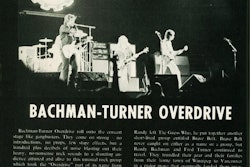Eyes on the Skies
The severe weather spotters of Trucker Weather Watch want you
Former long-hauler and current traffic control supervisor and driver for construction firm Stripe Rite, based near Seattle, Sean Kiaer in April 2006 was a front-line witness to the formation of an EF3 tornado in Tennessee. He called 911 from the cab to report the storm, which was headed directly for the town of Newbern, Tenn., but realized his own and the 911 operator’s limitations in getting information about the tornado out to the people who needed it most, namely Newbern residents and the National Weather Service.
Truckers News Senior Editor Todd Dills is the author of a novel, Sons of the Rapture, and blogs daily at www.overdriveonline.com/channel19. Write him at [email protected] or http://twitter.com/channel19todd.
After learning the storm killed 16 people in the town, he began charting a course that led to the beginning, later in 2006, of the Trucker Weather Watch group. Close to 20 members strong, the group is composed of drivers who’ve gone through official National Weather Service SkyWarn (or Severe Weather Reporting Network) training as severe weather spotters.
Kiaer had identified a real need in his initial assessment of the SkyWarn network, one that truckers could fill: “The biggest issue that the NWS has,” he says, is that, though the network is huge, “when do most people go to sleep? After 7 to 9 at night, there’s a huge gap, no spotters to be found. They’re all asleep. And during the day, the majority of us are working — in the factories, warehouses, lawyer’s offices — so most spotters’ eyes aren’t really attuned to the weather.”
Find more about the Trucker Weather Watch group at http://truckerweatherwatch.com or find their page on Facebook.
Montana-based NWS Warning Coordination Meteorologist Tanja Fransen describes Kiaer’s efforts to recruit truck drivers to the ranks of weather spotters as meshing with NWS needs. “Most of the weather spotters are stationary,” she confirms. In tornado alley, especially in Texas, Oklahoma and Missouri, she says, some mobile spotters are deployed during severe weather events, but having large numbers of trained spotter truckers “always on the road” around the nation would be invaluable to the SkyWarn program.
“The trucking industry is there,” Kaier says. “We’re out there in the weather 24/7. What better industry to put in to the Severe Weather Reporting Network than trucking?”
Initially, getting drivers trained proved to be difficult, as classes were only offered at particular times at National Weather Service satellite offices around the country. “That is why, after many months of discussion,” online training is available, Kaier says. He describes his effort through the years — “visiting National Weather Service offices around the country — I even spoke to the director of NOAA myself at one point,” he says — to get the new training out and available.
“From NOAA on down to the National Weather Service, the upper echelons are very excited about this,” Kiaer says. They’ve unofficially endorsed Trucker Weather Watch as a SkyWarn partner organization, and he expects official recognition. “All of our members go through the training,” which Fransen describes as much more rigorous than what, for instance, stationary spotters trained in Montana might go through.
“Our training is only two hours in Montana,” she says.
All Trucker Weather Watch members, however, go through 18 classes, at about an hour each, Kaier notes, to account for the dramatic variety of potential weather conditions a long-haul driver may experience. Members have access to a single call-in number to report severe weather. All you need to be a spotter is a cell phone, a computer and Internet access to complete the training.
Now that online training’s available, the group is actively seeking new members. To request application to take the courses, contact Kaier directly at [email protected].









